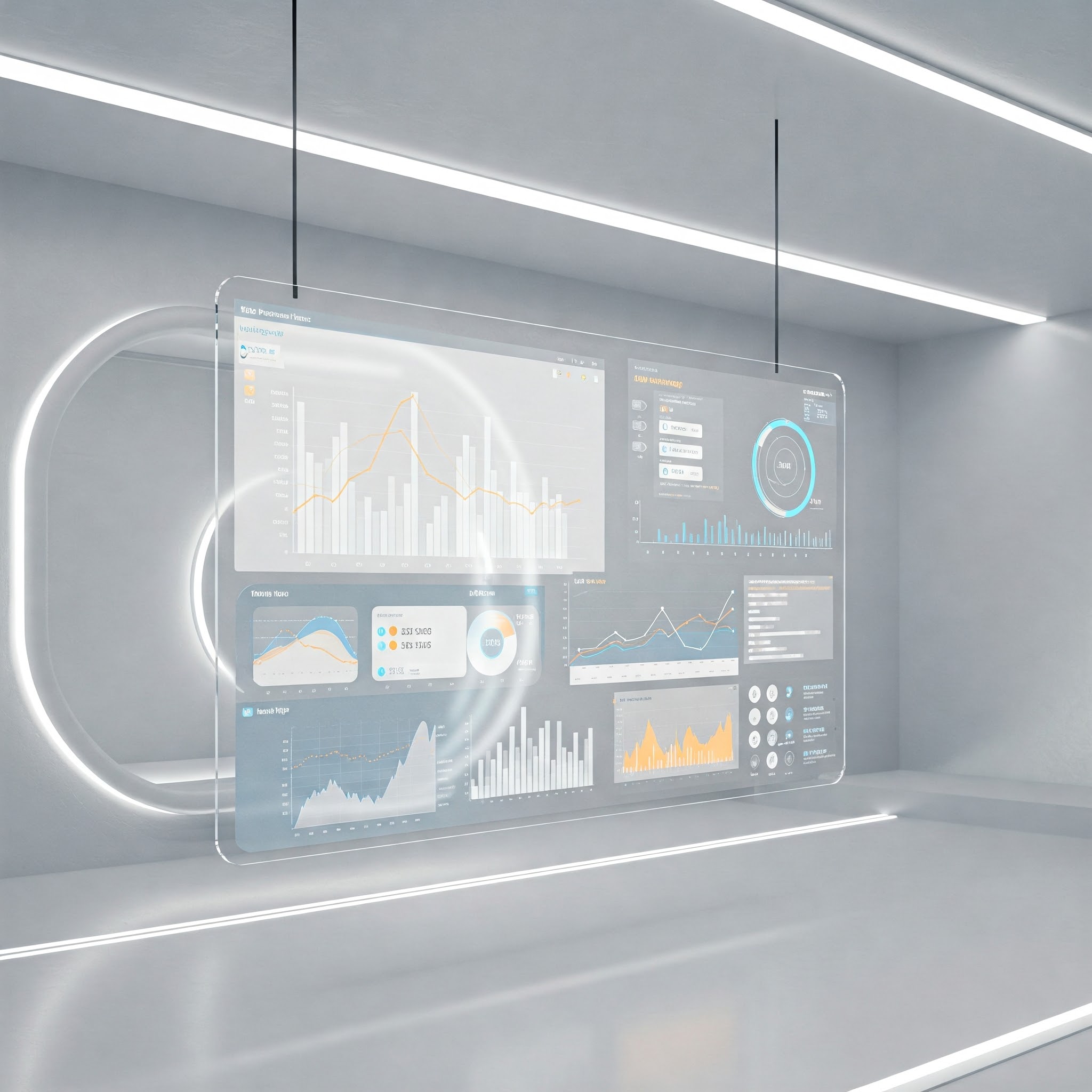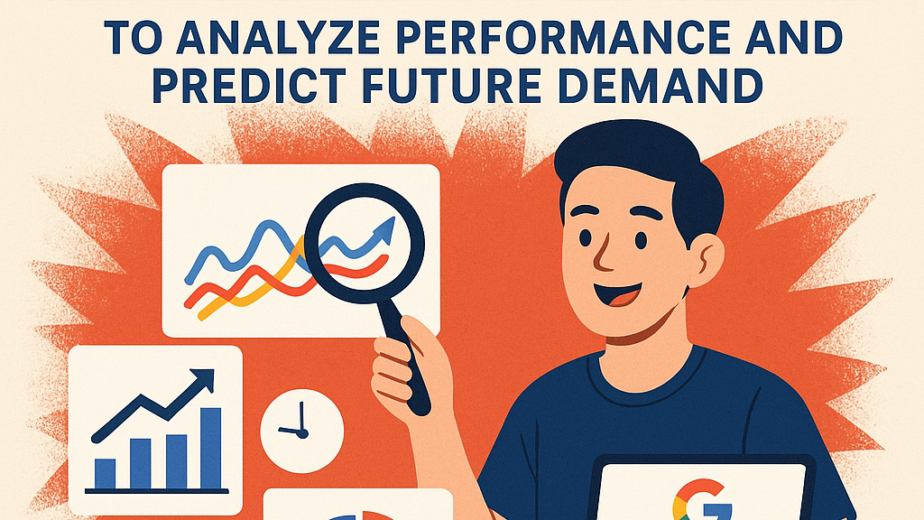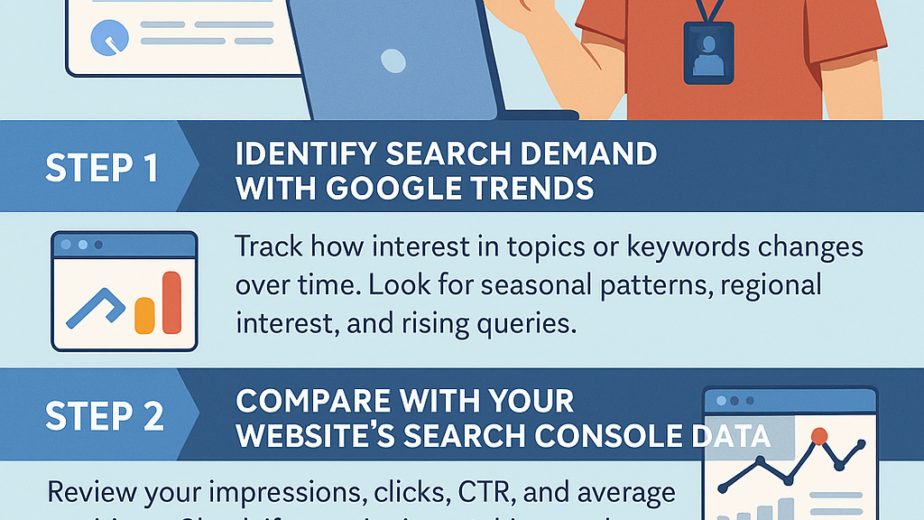Top Digital Marketing Trends in 2025: What Every Marketer Needs to Know
The digital marketing landscape in 2025 is evolving faster than ever. With AI reshaping content creation, privacy laws rewriting advertising playbooks, and consumers demanding hyper-personalized experiences, staying ahead of the curve is no longer optional—it’s essential.
Whether you’re a marketing manager, entrepreneur, or content strategist, keeping up with the latest trends is the key to staying competitive. In this post, we’re breaking down the top digital marketing trends of 2025 that are shaping the future of how brands attract, engage, and convert their audiences.
1. AI-Powered Everything
Artificial Intelligence isn’t new to marketing—but in 2025, it’s not just a tool, it’s a strategic engine behind everything from content to customer journeys.
What’s Happening:
Generative AI tools like ChatGPT and Jasper are now embedded into marketing platforms, enabling teams to create blog posts, email campaigns, social content, and ad copy in seconds.
AI-powered chatbots and virtual assistants are providing real-time customer service and guiding users through the sales funnel.
Predictive analytics tools are helping brands forecast trends and customer behaviors with remarkable accuracy.
Why It Matters:
AI is boosting productivity, lowering costs, and making personalization at scale possible. Marketers who learn to work with AI, not against it, will gain a serious competitive edge.
2. Hyper-Personalization at Scale
Forget “Hi [First Name]”—in 2025, personalization is deeper, smarter, and more dynamic.
What’s Happening:
Customer data platforms (CDPs) are consolidating data across touchpoints to build real-time user profiles.
Websites, emails, and ads are being dynamically personalized based on user behavior, location, and preferences.
Brands are tapping into behavioral psychology and AI to tailor offers and experiences at an individual level.
Why It Matters:
Consumers now expect brands to “know them.” Hyper-personalization increases engagement, boosts conversion rates, and builds long-term loyalty.
3. Search is Changing: Enter AI and Voice
Search engines are no longer just a list of links—they’re turning into AI-powered answer engines.
What’s Happening:
Google’s Search Generative Experience (SGE) is changing how people search, offering AI-generated answers before the traditional results.
Voice search continues to rise with the adoption of smart devices and wearables.
Zero-click searches are dominating SERPs, meaning more users are getting answers without visiting your site.
Why It Matters:
SEO is shifting from keyword stuffing to semantic content, topical authority, and conversational queries. Marketers must optimize for AI answers and focus on structured, high-quality content.
4. Video is Dominating—Again (But Smarter This Time)
Video marketing isn’t new, but in 2025 it’s more intelligent, interactive, and essential than ever.
What’s Happening:
Short-form video (think TikTok, Instagram Reels, YouTube Shorts) continues to outperform other formats in terms of engagement.
AI tools are helping teams repurpose long-form content into snackable, platform-native videos.
Interactive videos—quizzes, clickable CTAs, and embedded links—are boosting conversions.
Why It Matters:
Audiences crave fast, visual, and engaging content. If video isn’t already a core part of your content strategy, you’re missing out on attention and conversions.
5. First-Party Data is the New Gold
In a cookieless world, the brands with the most robust first-party data will win.
What’s Happening:
Google Chrome is phasing out third-party cookies, and privacy laws (GDPR, CCPA, and others) are tightening.
Brands are investing in email lists, loyalty programs, gated content, and interactive tools to collect data directly from users.
Consent-based marketing is becoming the standard, with transparency being a brand differentiator.
Why It Matters:
First-party data is not just more ethical—it’s more accurate and sustainable. Building strong customer relationships is key to long-term success.
6. Social Commerce is Exploding
Social media is no longer just for brand awareness—it’s becoming a direct sales channel.
What’s Happening:
Platforms like TikTok, Instagram, and Pinterest are rolling out native shopping tools.
Influencer marketing is merging with commerce—think creators launching exclusive product lines directly through social.
Livestream shopping events are gaining traction, particularly in fashion, beauty, and tech.
Why It Matters:
Consumers are increasingly discovering and purchasing products without ever leaving the app. Brands that lean into shoppable content and creator collaborations are seeing massive ROI.
7. Humanized Brands Win
Despite all the tech, consumers still crave authenticity.
What’s Happening:
Brand transparency, inclusivity, and ethical practices are key decision factors for consumers.
Storytelling is making a comeback—brands are sharing behind-the-scenes content, founder stories, and user-generated content (UGC).
Micro-influencers and employee advocates are becoming trusted voices for brands.
Why It Matters:
Trust drives action. In a world of deepfakes and AI-generated everything, real voices and genuine values are what set brands apart.
8. Augmented Reality (AR) is Getting Practical
Augmented Reality is moving from novelty to necessity—especially in eCommerce.
What’s Happening:
Virtual try-ons for clothes, makeup, and eyewear are becoming standard.
AR filters and experiences are enhancing brand engagement on Instagram and Snapchat.
Furniture and home goods brands use AR to let customers “see” products in their space.
Why It Matters:
AR reduces return rates, increases confidence, and bridges the online/offline shopping gap. Expect more brands to integrate AR into product pages and mobile apps.
9. Content Marketing = Thought Leadership + Utility
Content in 2025 is all about helping, not selling—and positioning your brand as a go-to expert.
What’s Happening:
Audiences are overloaded with content, so utility and depth are what win attention.
Long-form, in-depth guides, webinars, and interactive tools are outperforming surface-level blog posts.
AI is helping content teams scale production, but originality and expertise are the differentiators.
Why It Matters:
People don’t want fluff—they want answers, frameworks, and trustworthy information. Content that solves problems builds authority and drives organic traffic.
10. Marketing Automation is Smarter—and Simpler
Marketers are using automation to do more with less, especially in small and mid-size businesses.
What’s Happening:
Drag-and-drop builders and prebuilt workflows are making tools like HubSpot, ActiveCampaign, and Klaviyo more accessible.
Smart automation is being used for email nurturing, lead scoring, retargeting, and even chat interactions.
AI is helping automate not just tasks, but decisions—when to send, who to target, what content to deliver.
Why It Matters:
The right automation makes your campaigns faster, more efficient, and more impactful—without sacrificing personalization.
Wrapping Up: Future-Proofing Your Marketing Strategy
2025 is the year where tech meets trust. Yes, AI, automation, and analytics are shaping the future—but so is human connection, transparency, and personalization.
To stay ahead, smart marketers will:
Embrace AI without losing the human touch
Invest in first-party data and privacy-first strategies
Focus on personalization and utility
Stay agile, experimental, and curious
The future isn’t just digital—it’s dynamic. And it’s here.




